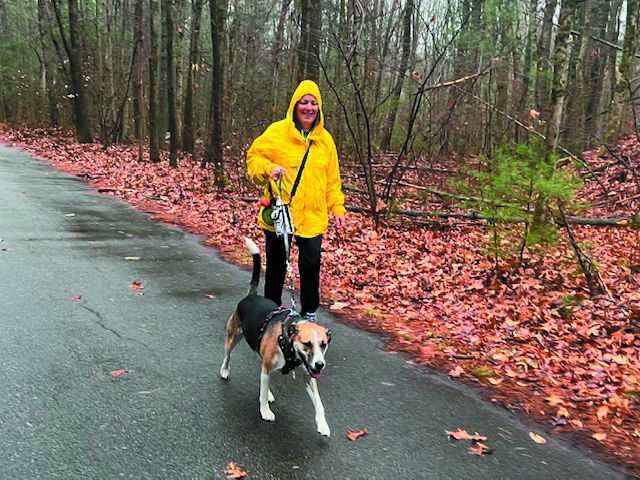Walk the dog before or after meals?
Q: At my local animal shelter, there has been some back-and-forth as far as whether to feed the dogs and then let them go for a walk or feed them after a walk. I feed my own dog first, and I have never had an issue. Which is the best way to go?
Liz Menear
Weymouth, Massachusetts
Dear Ms. Menear,
A: There is no hard-and-fast rule. Many people do it in the order you do: feed, then walk. But healthy adult dogs have a remarkable capacity to hold both their liquid and solid waste for many hours. Consider that most dogs get a chance to relieve themselves before their people go to bed and do just fine even though they don’t have another opportunity till the next morning. Thus, as long as a dog is taken out three or four times a day (twice a day isn’t enough for a dog’s environmental enrichment and fresh air needs), it doesn’t matter which comes first: the meal or the potty break.
For puppies it’s a different story. The rule of thumb for how long they can hold their urine is their age in months plus one. Thus, for instance, a four-month-old dog needs to be let out at least every five hours.
By the way, some fear moderate exercise soon after eating increases the risk for bloat in dogs. Research conducted a number of years ago suggests the opposite: moderate physical activity might actually decrease the risk.
What “heel” really means
Q: Are dogs really supposed to stay at your heel when they walk with you on leash? Are you doing something wrong if your dog walks alongside you rather than at your heel or even a little ahead (as long as she doesn’t tug)? I know in my own case, it would be physically awkward for me if my dog always remained a step behind me — at my heel — rather than next to me when I walk her.
Lynn Barclay
Ottowa, Canada
Dear Ms. Barclay,
A: Don’t let yourself get hung up on the exact meaning of “heel.” Even the exact meaning isn’t exact. Some trainers say it’s a cue for a dog to line up her head and shoulders with your left hip. Others say it’s to keep your pet’s head closer to the actual heel of your shoe. But the main purpose is to ask your dog to walk with you rather than lag behind or pull you forward too fast.
There’s nothing magical about
the word “heel,” by the way. In fact, when your dog takes a walk, part of the fun for her is getting to explore and sniff. Then, when you want your pet’s pace to align more with yours, you can also use a term like “Together” or “Come close” or whatever else
feels right.





